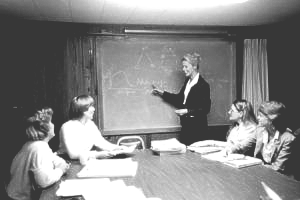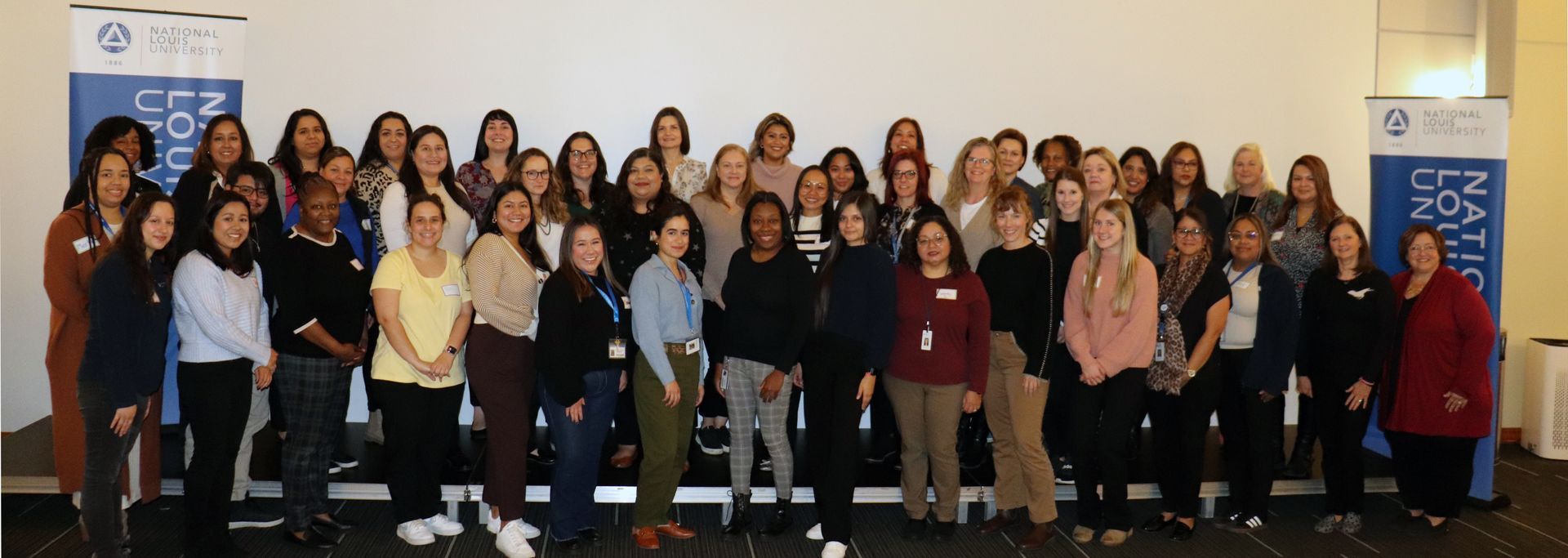BY Emilie Austin | November 5, 2025

Sim Loh is a family partnership coordinator at Children’s Village, a nationally-accredited Keystone 4 STARS early learning and school-age enrichment program in Philadelphia, Pennsylvania, serving about 350 children. She supports children and families, including non-English speaking families of immigrant status, by ensuring equitable access to education, health, employment, and legal information and resources on a day-to-day basis. She is a member of the Children First Racial Equity Early Childhood Education Provider Council, a community member representative of Philadelphia School District Multilingual Advisory Council, and a board member of Historic Philadelphia.
Sim explains, “I ensure families know their rights and educate them on ways to speak up for themselves and request for interpretation/translation services. I share families’ stories and experiences with legislators and decision-makers so that their needs are understood. Attending Leadership Connections will help me strengthen and grow my skills in all domains by interacting with and hearing from experienced leaders in different positions. With newly acquired skills, I seek to learn about the systems level while paying close attention to the accessibility and barriers of different systems and resources and their impacts on young children and their families.”

This document may be printed, photocopied, and disseminated freely with attribution. All content is the property of the McCormick Institute for Early Childhood.
By Emilie Austin
Introduction: The Power of Scaffolding in Leadership Onboarding
Starting a new role at any level can feel like stepping onto a treadmill already running at full speed. Between learning protocols, building relationships, and navigating new systems, leaders often experience both excitement and overwhelm. Yet, when orientation is intentionally scaffolded, the experience transforms from chaotic to purposeful. Materials are introduced in stages, checklists guide progress, supervisors encourage autonomy, and mentors offer timely feedback. These are components of an effective learning design that support confidence and competence.
This approach, used at the McCormick Institute for Early Childhood at National Louis University, reflects the backward design framework, emphasizing clear outcomes, alignment, and reflection. When applied to leadership onboarding, backward design ensures that new leaders quickly understand not just what to do, but also why their role matters and how it connects to the organization’s mission.
Learning Through Design
In the early weeks of transition into the manager of learning experience design and innovation role, I quickly observed that McCormick’s onboarding process mirrored principles long used in instructional design. Orientation sessions are sequenced with intention, each building toward a deeper understanding of institutional culture, values, and systems. Rather than rushing to master everything at once, new employees are encouraged to move through a scaffolded structure. This eased the learning curve and modeled a key leadership competency of creating the conditions for others to succeed through thoughtful, staged support.
Leadership Insight: Observe Before You Act
Many leaders are driven by passion and a desire to make an immediate impact. However, effective leadership, especially in a new environment, begins with observation. Maria Montessori’s “observe first” principle applies as much to leadership as it does to teaching.
Observation allows new leaders to stand on the shoulders of those who came before, learning from their successes and challenges. It cultivates humility and respect, ensuring that decisions are grounded in the collective experience of the team. As in instructional design, intentional observation leads to intentional action, which builds trust, strengthens collaboration, and aligns innovation with purpose.
When leaders approach orientation and leadership development through the lens of scaffolding, they model the practices they hope to cultivate in their teams. A scaffolded approach communicates respect, clarity, and care. It reminds us that growth takes time, learning is relational, and the path from newcomer to contributor is built one intentional step at a time.
Practical Strategies for Leaders
Leaders can apply scaffolding and backward design principles to their own teams through the following steps:
- Start with clear outcomes. Identify the skills, knowledge, and dispositions you want your team to build over time.
- Sequence for success. Break complex initiatives into manageable stages that progressively build mastery and confidence.
- Model reflection and feedback. Create opportunities for both giving and receiving constructive input.
- Encourage observation. Invite new team members to spend time learning the organization’s culture and rhythm before leading change.
- Balance urgency with intentionality. Move strategically, not reactively, ensuring that innovation aligns with shared goals.
Resources for Deeper Exploration
- Bernstein, Ethan S. “Making Transparency Transparent: The Evolution of Observation in Management Theory.” The Academy of Management Annals, vol. 11, no. 1, 2017, pp. 217–66,
- Wiggins, G. P., & McTighe, J. (2005). Understanding by design (2nd ed.). Pearson.
- Talan, T., Masterson, M., & Bella, J. (2023a, April 4).
Whole leadership: A framework for early childhood programs – 2023. McCormick Center for Early Childhood Leadership. https://www.mccormickinstitute.nl.edu/whole-leadership-framework
Emilie Austin is the Manager of Learning Experience Design and Innovation for the McCormick Institute for Early Childhood at National Louis University. In this role, she leads the design, development, and implementation of innovative instructional solutions that enhance learning outcomes and advance the Institute’s mission to strengthen early childhood leadership and practice. Emilie collaborates with subject matter experts, trainers, and institutional partners to create engaging, accessible, and research-informed learning experiences across multiple modalities, including e-learning, blended, and instructor-led formats.
As part of her work, Emilie champions the integration of emerging technologies and pedagogical best practices such as AI-driven personalization, Universal Design for Learning (UDL), and competency-based education to foster meaningful learning experiences for professionals in the early childhood field. She also provides leadership in continuous quality improvement, supporting data-informed design and innovation across MIEC programs.
Emilie holds a bachelor’s degree in photography and Videography as well as a Master’s degree in Education Technology and Instructional Design. She is passionate about advancing equitable, learner-centered education and empowering educators through creative and effective instructional design.




